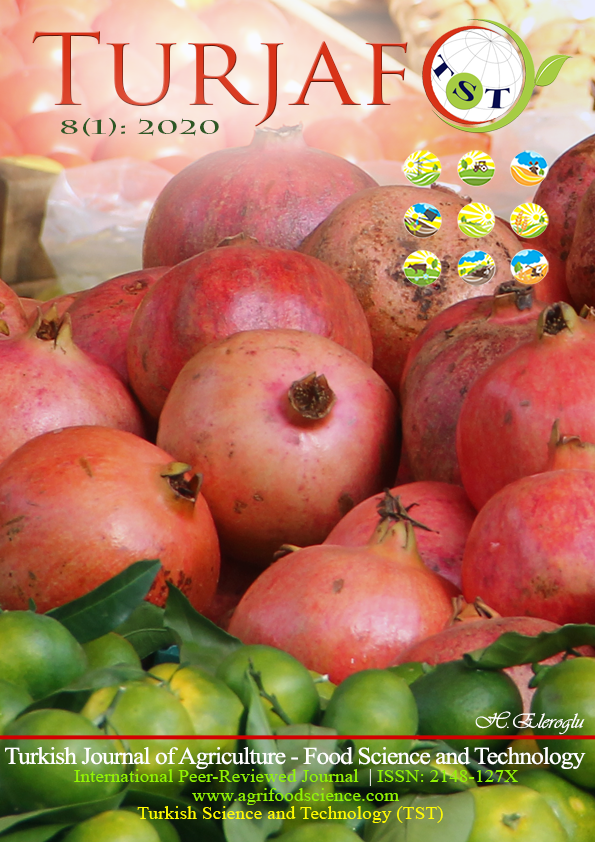Effect of Fluctuate Lighting Program on Production and Carcass Characteristics of Broiler Chickens
DOI:
https://doi.org/10.24925/turjaf.v8i1.230-233.3051Keywords:
Broiler chicks, Fluctuate lighting, Feed consumption, Live weight gain, Carcass characteristicsAbstract
This research was conducted for 42 days, in order to determine the effects of fluctuate lighting program on production and carcass characteristics of broiler chickens. 300 day old Ross 308 chicks were used. Chicks were randomly distributed to 2 lighting groups which were normal lighting (control) and fluctuate lighting, and each group was divided in to 3 replicates containing 50 chicks. For both groups lighting was arranged as 23 hours of lighting versus 1 hour of dimming. Control group was subjected to constant lighting of 20 lux/m2 for the days 0-21, and 5 lux/m2 for the days 22-42; while in the fluctuate lighting group was subjected to lighting of 5 lux/m2 for 45 minutes and additional 20 lux/m2 for 15 minutes every hour. There were no differences of final body weight, weekly body weight gain, cumulative feed intake, cumulative feed conversion ratio, viability, foot and leg problems, hot and cool carcass weight, thigh weight, breast weight, wing weight, back weight, liver or heart weights. However, there were statistically significant differences of gizzard weight and abdominal fat weight between two groups. In conclusion, gizzard and abdominal fat weights of broilers subjected to fluctuate lighting are less than control. This suggests that fluctuate lighting can be used to lower abdominal fat which is an important problem in broilers.Downloads
Published
31.01.2020
How to Cite
Türker, İsmail, Akif Boz, M., Ozan Taşkesen, H., & Kamanlı, S. (2020). Effect of Fluctuate Lighting Program on Production and Carcass Characteristics of Broiler Chickens. Turkish Journal of Agriculture - Food Science and Technology, 8(1), 230–233. https://doi.org/10.24925/turjaf.v8i1.230-233.3051
Issue
Section
Research Paper
License
This work is licensed under a Creative Commons Attribution-NonCommercial 4.0 International License.









